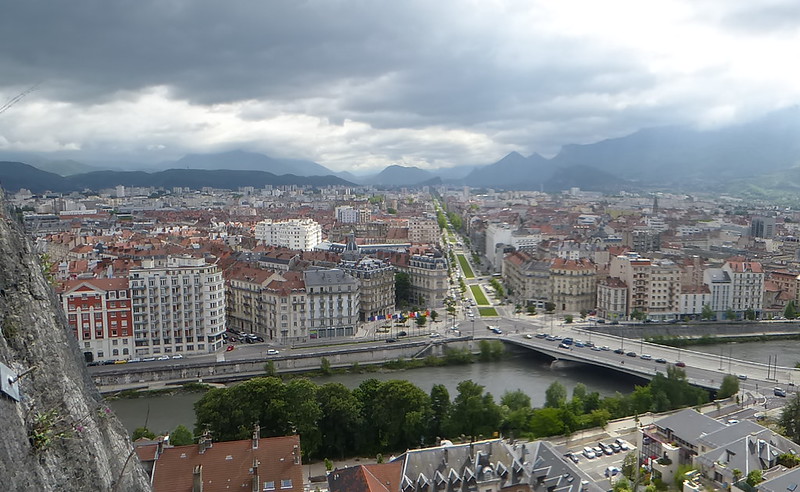If you are planning a visit to Grenoble, France, there are a number of things to do. From Canyoning to skiing, you’ll find it all in this article. Don’t miss: Le Funiculaire de Saint-Hilaire du Touvet, Musée de Grenoble, and a 20,000 m2 botanical garden. While the museum is open year-round, admission is EUR5 for adults. Younger visitors get in free on the first Sunday of each month, and under 26s are admitted free.
Canyoning in Grenoble
If you’re looking for a fun day out, why not try canyoning in Grenoble France? This French city is surrounded by mountains, and the water created canyons in between them. Here are some tips for choosing a canyon for your trip. These are listed below by massif and distance from Grenoble. Try the Vercors Canyoning massif, Ecouges Canyoning massif, Infernet Canyoning massif, or Furon Canyoning.
First, the Furon canyon is probably the most accessible of the canyons in Grenoble. This canyon is located about an hour and a half from Grenoble, and it includes several options for vertical and horizontal movement. It’s accessible to novice climbers and is a great way to experience climbing thrills without the physical or technical requirements. Canyoning Grenoble has three via ferrata available, so there’s a perfect one for you.
If you’re new to canyoning, you’ll probably want to start with the lower section of Les Ecouges. The lower section is a half-day trip, and it takes two and a half hours to complete. There are several jumps and slides, as well as white water swimming and short abseils – the highest of which is 12 metres! You can even integrate the experience with an easier section to get the most out of your adventure.
Skiing in Grenoble
For great skiing and snowboarding in France, consider ski resorts in Grenoble. With convenient transportation and convenient accommodation, the French ski resorts are an easy and convenient choice for vacationers. Listed below are some of the top ski destinations near Grenoble. Read on to learn more about this winter sport destination. And don’t forget to check out the free weekend shuttle to nearby ski resorts! You won’t regret it!
If you’ve ever dreamed of gliding down a mountain, Grenoble is the place to go. It’s one of the most picturesque cities in France and is the home of world-class ski resorts. In addition to ski slopes, Grenoble is the city’s university center and gateway to the French Alps. Ski resorts are just a 40-minute drive away. You can find cheap car rentals in Grenoble and transfer to other ski resorts.
If you’re planning a trip to the French Alps, Grenoble is the gateway to four mountain chains. The three valleys are notorious for being difficult to reach from major airports in France, but the three villages are connected to one another. Les Menuires is a small village, but is adjacent to some of the region’s famous slopes. But it doesn’t have the vibrancy of nearby Val Thorens.
Le Funiculaire de Saint-Hilaire du Touvet
The Funiculaire de Saint-Hilaire-du-Touvet is the only touristic funicular in the Alps. It was built in 1920 and opened in 1924. Originally built to serve Cure establishments on the Plateau des Petites Roches, the Funicular’s route is unique, and it grimpes across rocky terrain. It ends in a 130-meter-long tunnel.
In 1920, the Caisse Syndicale d’Assurance Mutuelles des Forges de France built the funicular. The Funicular served the sanatoriums on the Petites Roches plateau, and it ensured the transport of goods and daily deserte. In 1972, the funicular was abandoned, but a societe took it over and restored it for public use. It operated until 1977, when it was closed to the public. The Funiculaire is now operated by a regie municipale.
Musée de Grenoble
The Musée de Grenoble is one of the premier museums in France. The museum was founded in 1798 and houses more than 1,500 pieces of art from different eras. Besides holding paintings from the 17th century, it also has a collection of ancient Egyptian and Greek artifacts. In addition to permanent exhibitions, the museum is also home to several internationally acclaimed temporary exhibitions.
The Musee de Genoble is home to a collection of masterpieces by famous European artists. There are works by Ingres, Canaletto, and Rubens. This museum is home to some of the best modern art in France, and it also offers temporary exhibitions. You can also check out the Egyptian mummy. The museum also hosts a cafe and a terrace where you can dine.
While you’re in Grenoble, you may also want to check out the city’s history. The town was a hotbed of resistance activity during World War II, and the Vercors Massif bordered it during the conflict. As such, the Musée de Grenoble has a lot to offer visitors interested in history. A visit to this museum will provide a full picture of the history of the city, including its rich cultural heritage.
Saint-Laurent Archaeological Museum
The Saint-Laurent Archaeological Musee in Grenoble, France, dates back almost two millennia and is one of the city’s first Historic Monuments. Visitors will see the evolution of the city’s architecture over the centuries. Located in an ancient parish church, the museum also has a modern section that is protected by a glass canopy.
The old town of Grenoble is the city’s cultural hub, with its numerous streets and squares. The city was once home to heavy industry and mining. You can find abandoned mines and factories in the surrounding area, including the La Mure coal mine. If you like the history of a city, you’ll love Grenoble. Explore its past by visiting this museum.
Located near Grenoble, the Saint-Laurent Archaeological Musee is one of the city’s oldest museums. Housed in an ancient church, this museum is located on a site where early Christians were buried. The museum’s collections span over 2,000 years of history, including the crypt of St Ovand, which dates back to the 4th century.
Musée Dauphinois
The Musée Dauphinois is located in the old convent of Santa Maria d’en Haut, and was inaugurated by former Minister of Culture Andre Malraux in the 1970s. This museum covers the history of the Alps from the time of the Stone Age to the present, exhibiting numerous archaeological tools and customs. The museum is unique in that it features a chapel from the convent, as well as an entire gallery dedicated to the history of the region.
Located on the pentes of the Bastille in Grenoble, France, the Musee Dauphinois has an intimate relationship with the local population. A collection of over 100,000 artifacts from the prehistoric era is featured, making it the largest collection of industrial heritage from prehistoric territory. The museum also has a library that contains over 150,000 documents, covering topics ranging from archeology to decorative arts.
Fort de la Bastille
The fort is the most important historical site in Grenoble. It was originally built on a hill so that it could keep watch over the city and the valleys of Isere and Drac. The steep terrain and narrow valleys around it made it difficult to attack. In 1538, Francis I ordered the construction of the fort and commissioned General Haxo to improve the fortifications.
The site is listed on the Supplementary Inventory of Historic Monuments. The fort is located in an area of natural interest, which is home to several species of birds, plants, and animals. You can walk around the fort and visit five museums. If you are interested in learning more about the history of mountain soldiers, you should visit the museum located in the fort. The museum will educate you about the history of the mountain soldiers and the life in the fort.
The fort is situated on the last promontory of the narrow Mount Rachais, which is the southernmost mountain of the Chartreuse range. The plateau is 264 meters above the valley floor. This valley floor was formed by a glacier 25,000 years ago. Later, alluvial deposits filled in the lake and made it a beautiful valley. The fort today has a spectacular view of the city.
Place Victor Hugo
The Place Victor Hugo in Grenoble is one of the city’s main public squares, and it’s also one of the city’s most popular. It’s home to the city’s Christmas Market, which features 91 exhibitors selling handcrafted items, including wooden toys, holiday decorations, and santtons. You can also purchase locally produced produce and food items from the market, such as honey, gingerbread, and foie gras.

